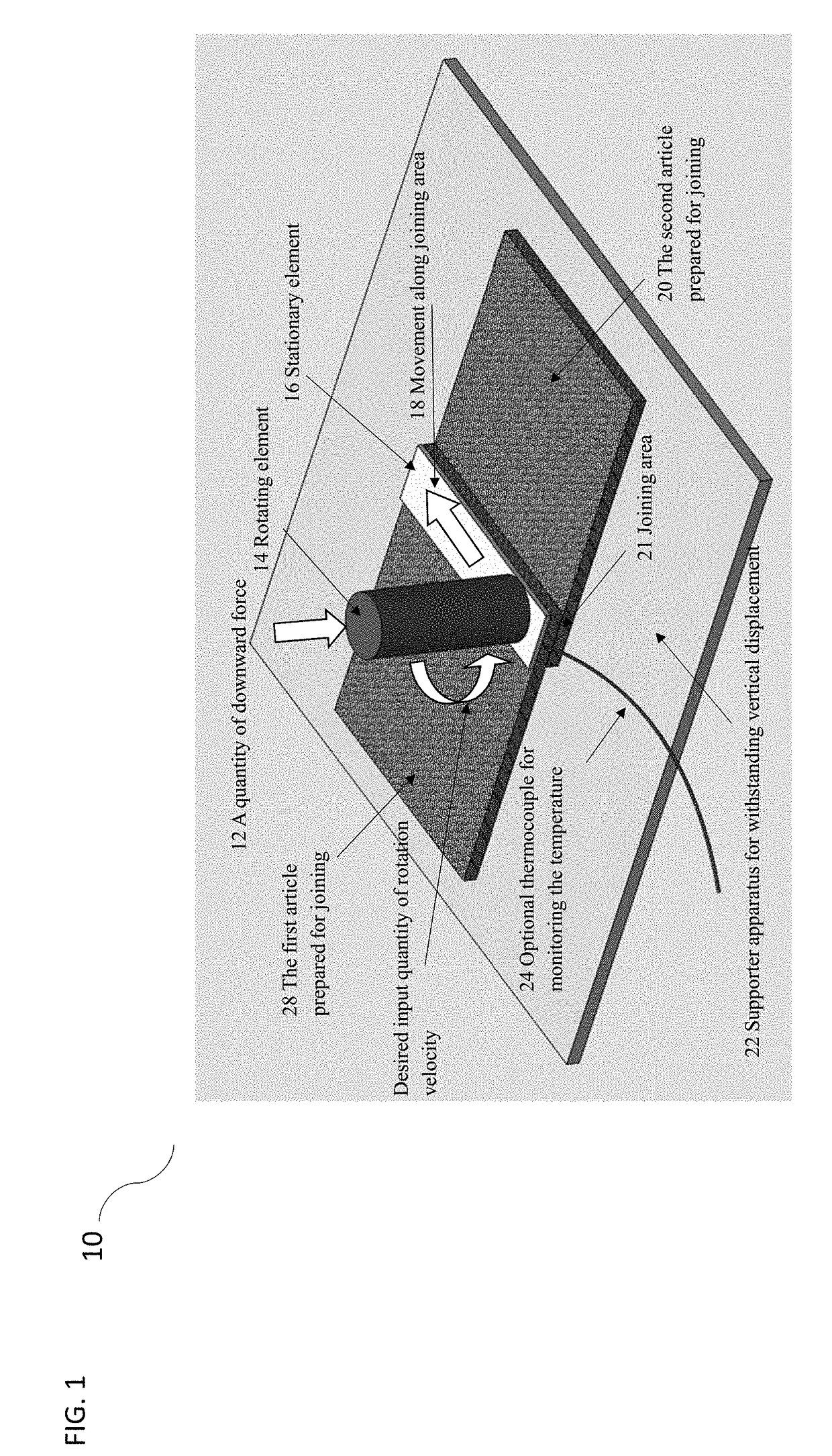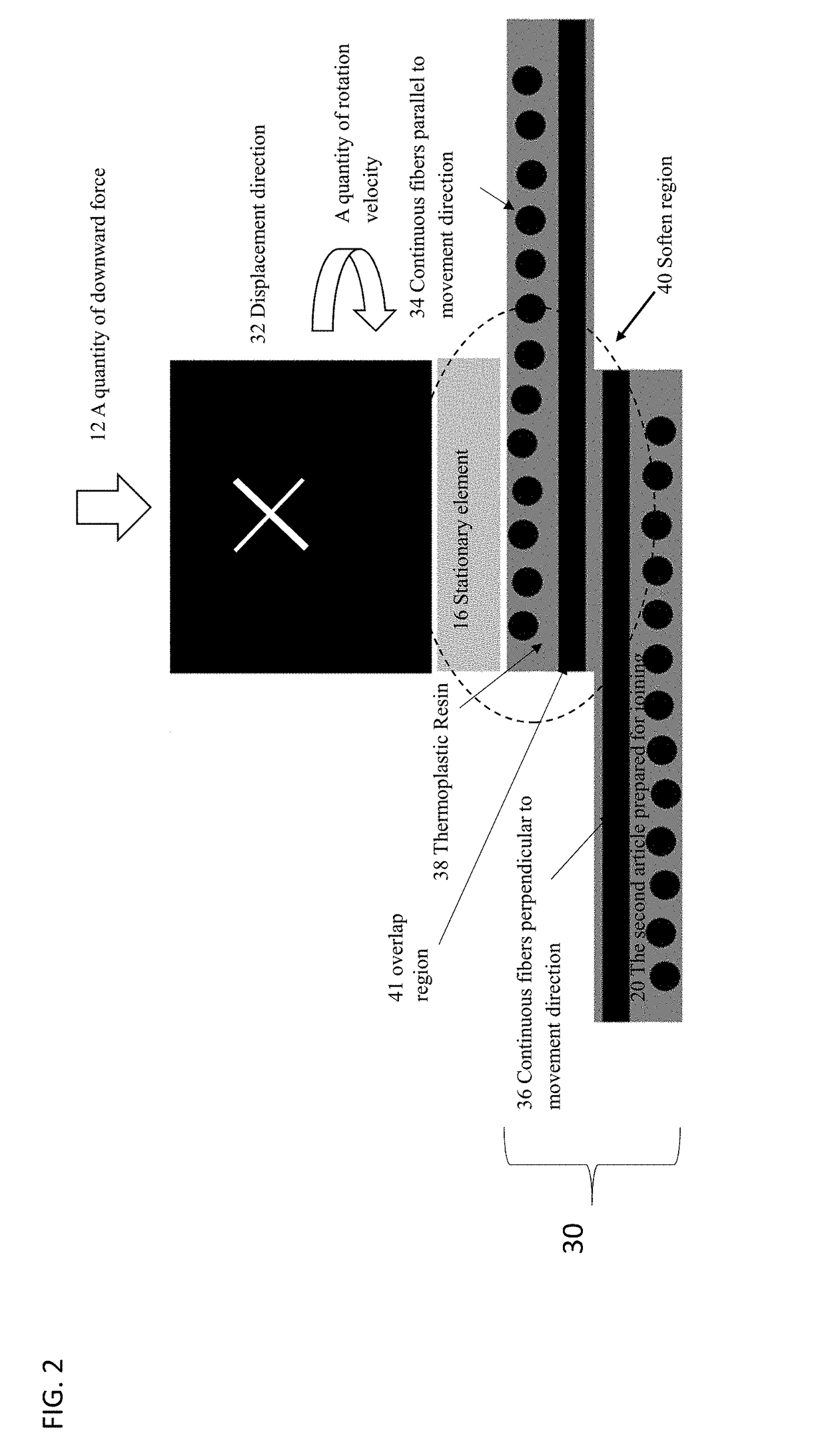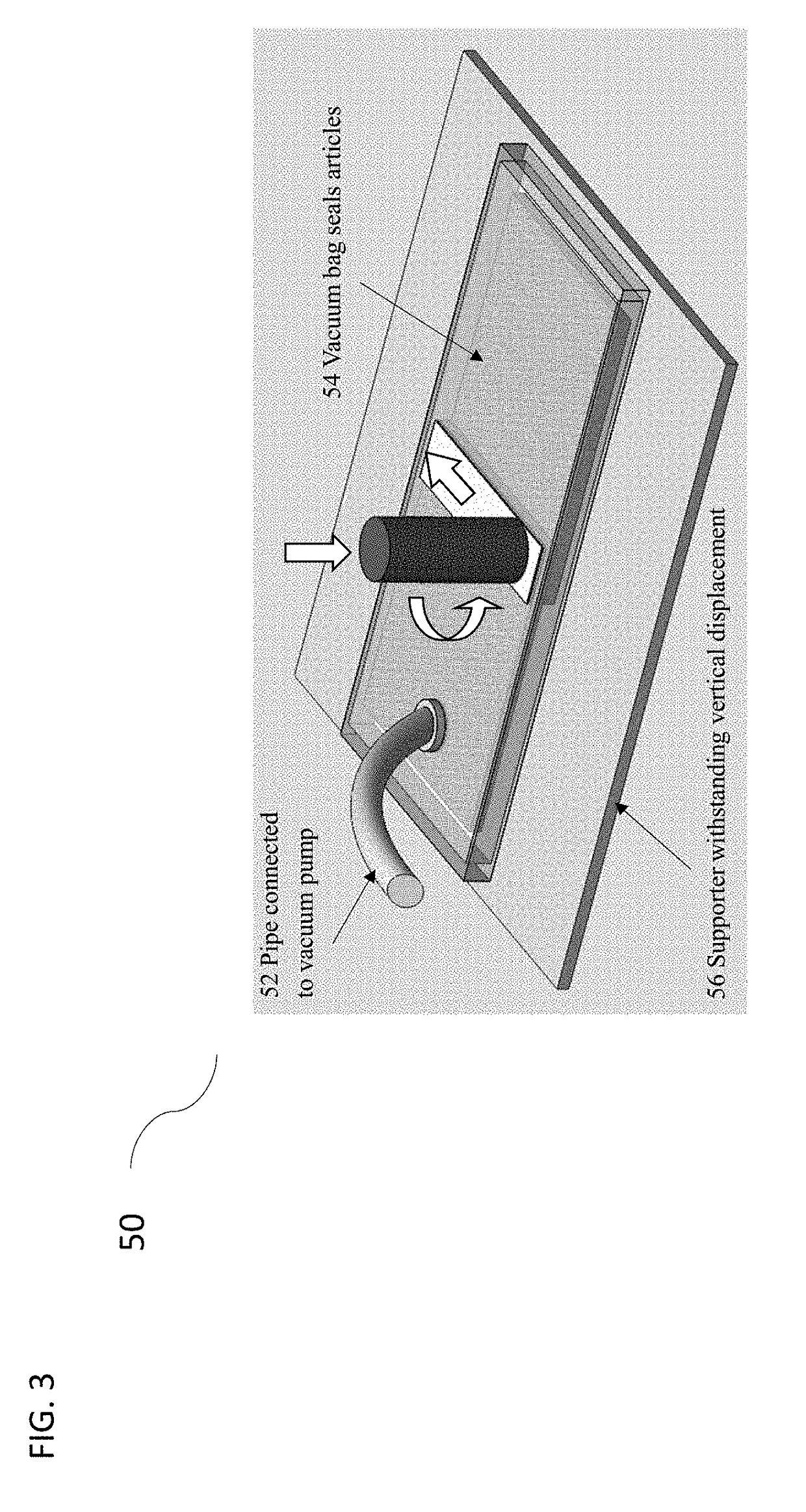System and Apparatus for Fiber Reinforced Thermoplastics Joiner
a technology of fiber reinforced thermoplastics and joiners, which is applied in the field of system and apparatus for fiber reinforced thermoplastics joiners, can solve the problems of increasing the cost of fiber reinforced polymer, affecting the performance of the product, and the inability to reheat and re-form the reinforced thermoset, so as to achieve the effect of improving the joining strength or deteriorating
- Summary
- Abstract
- Description
- Claims
- Application Information
AI Technical Summary
Benefits of technology
Problems solved by technology
Method used
Image
Examples
second embodiment
[0048]FIG. 8, illustrates a side view of a mechanical schematic of the apparatus which is used for joining a metal stiffener feature to fiber reinforced thermoplastic aero structures 110. At least one Metal stiffener 114 are joined with fiber reinforced thermoplastic aero structures 112. In this embodiment, the stationary element 16 is optional, depending on the property of metal stiffeners 114 and joining parameters.
third embodiment
[0049]FIG. 9, illustrates a side view of a mechanical schematic of the apparatus which is used for joining fiber reinforced thermoplastic to reinforced metal automotive structures 120, increasing the stiffness and strength of that structure. Fiber reinforced thermoplastic 122 is joined with the metal automotive structure 124 as the second article. The metal surface can be treated to facilitate the joining performance between metal and thermoplastic composite.
[0050]The stationary element 16 should be temporarily fixated or restrained, and the release agent 106 is suggested to be inserted between the stationary element 16 and the fiber reinforced thermoplastic 124 to facilitate the removal of the stationary element 16. The rotation velocity of the rotating element 14 should be elaborated to soften the fiber reinforced thermoplastic 122. An optional supporter of metal structure 126 may be required to withstand the downward force which may deform the metal structure.
fourth embodiment
[0051]FIG. 10 illustrates a side view of a mechanical schematic of the apparatus which is used for joining fiber reinforced thermoplastic to repair damaged metal civil structures 130. In this embodiment the damaged metal structure 134 is the second article, while the first article is the fiber reinforced thermoplastic 122 employed for repairing. The fiber reinforced thermoplastic 122 is softened, and the thermoplastic resin 136 in the first article will flow into the crack 132 and the undamaged metal surface will also bond with the fiber reinforced thermoplastic 122. The damaged metal structure 134 is thus reinforced by the joined fiber reinforced thermoplastic 122. In this case supporter may not be necessary if the metal structure 134 can withstand downward force with negligible displacement. The stationary element 16 should be temporarily fixated, and release agent 106 is suggested to be inserted between the stationary element 16 and the fiber reinforced thermoplastic 122 to facil...
PUM
| Property | Measurement | Unit |
|---|---|---|
| Force | aaaaa | aaaaa |
| Area | aaaaa | aaaaa |
| Velocity | aaaaa | aaaaa |
Abstract
Description
Claims
Application Information
 Login to View More
Login to View More - R&D
- Intellectual Property
- Life Sciences
- Materials
- Tech Scout
- Unparalleled Data Quality
- Higher Quality Content
- 60% Fewer Hallucinations
Browse by: Latest US Patents, China's latest patents, Technical Efficacy Thesaurus, Application Domain, Technology Topic, Popular Technical Reports.
© 2025 PatSnap. All rights reserved.Legal|Privacy policy|Modern Slavery Act Transparency Statement|Sitemap|About US| Contact US: help@patsnap.com



